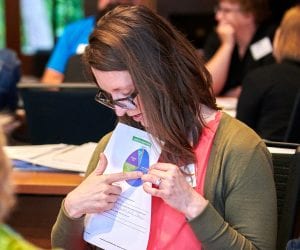We are increasingly seeing the impacts of climate change around the world: rising sea levels, more severe weather events, prolonged droughts, and the destruction of marine ecosystems. As our planet warms, the limited resources we share become even more limited, and this can have devastating consequences on a human level. For example, a recent study estimates that 2 billion people may be displaced from their homes by rising sea levels by 2100.
International Youth Day in Action
Every year on August 12, the United Nations honors International Youth Day to celebrate and empower young people around the world. This year, take a look at the “climate kids,” a group of young people who are asserting their right to a stable climate. These 21 youths have combined forces to file suit against the United States federal government for its failure to protect their constitutional rights to life, liberty, and property. The lawsuit, Julianna v. U.S., argues that by its promotion of fossil fuel production and its lack of action to address the effects of greenhouse gases, the government is responsible for the destabilized climate that threatens the lives and well-being of this generation.
Why These Young People Care About Climate and How They’re Fighting for Change
The plaintiffs come from different parts of the United States and each has their own story of personal connection to the impacts of climate change. Nathan Baring, 17, from Fairbanks, Alaska knows that the Arctic sea ice of his home is likely to be completely gone by 2050, saying, “…I can’t deal with the idea that what my parents experienced and what I have experienced will not exist for my children….I won’t sit idly by and watch winter vanish.” Miko Vergo, 16, lives in Oregon but was born in the Marshall Islands, a small Pacific nation where, according to court papers, a fifth of the population has already been forced to move due to tidal flooding. Journey Zephier has seen warmer waters lead to coral bleaching near his home on the island of Kauai, threatening local fisheries and biodiversity.
The suit was originally filed in 2015, and the fossil fuel industry joined the federal government in attempts to have the case dismissed. In November 2016, however, U.S. District Court Judge Anne Aiken granted it the right to a trial, saying, “I have no doubt that the right to a climate system capable of sustaining human life is fundamental to a free and ordered society.” However, last month, a court of appeals ordered a temporary stay on the proceedings until Judge Aiken’s decision can be reviewed.
Regardless of the outcome, this case shows the power of youth to take action against one of the greatest global challenges we face. This International Youth Day, it’s important to include and celebrate young people in the decision-making processes that shape the world they will soon inherit.
The Human Side of Climate Change: Resources for Teachers
To teach about the issue of climate change from a social perspective in the high school classroom, try Population Education’s lesson Carbon Crunch. Students use snap cubes to represent per capita greenhouse gas emissions for a variety of different countries, examine the relative impact of climate change around the world, and work to identify fair solutions.
You can also take a look at the United Nations’ lists of International Youth Day 2017 events and peace-building issues for youth.





